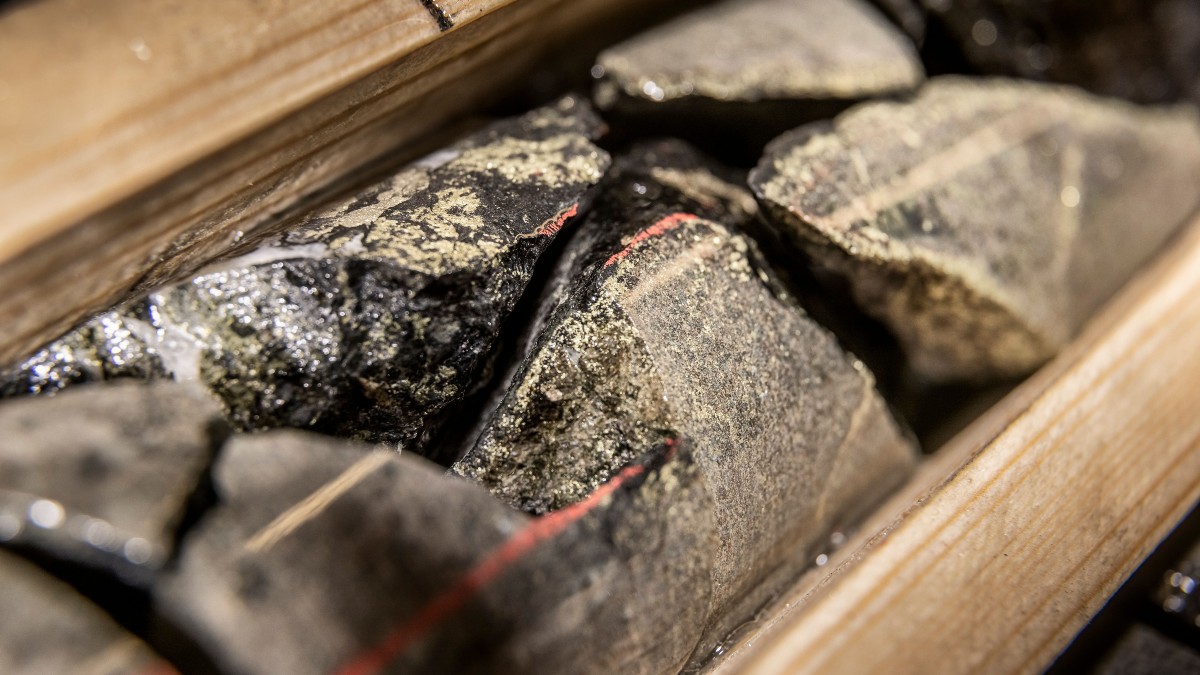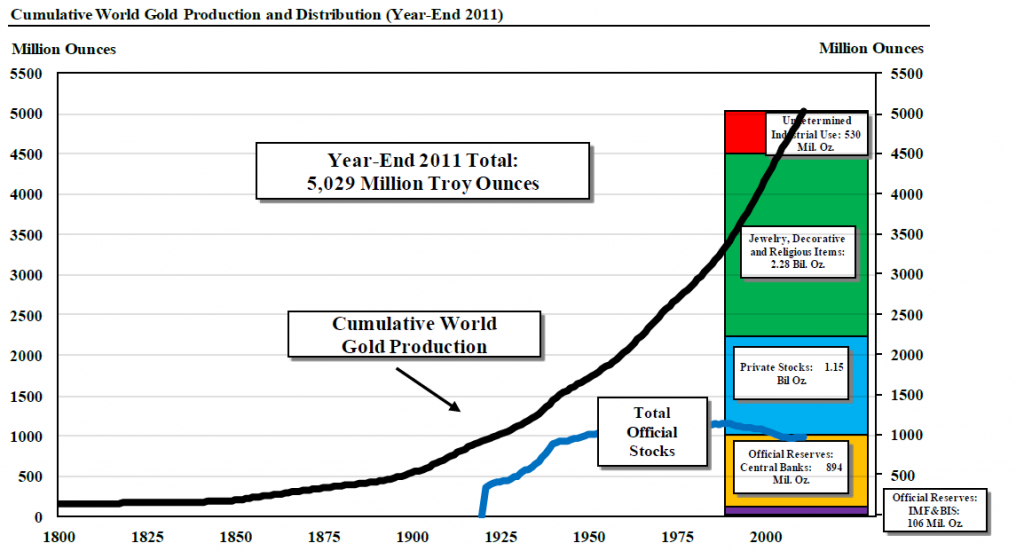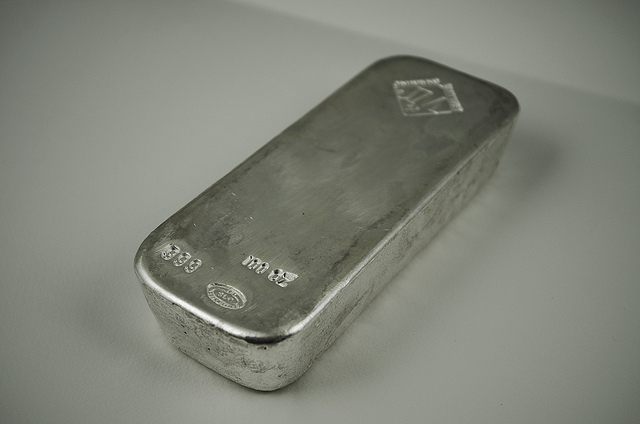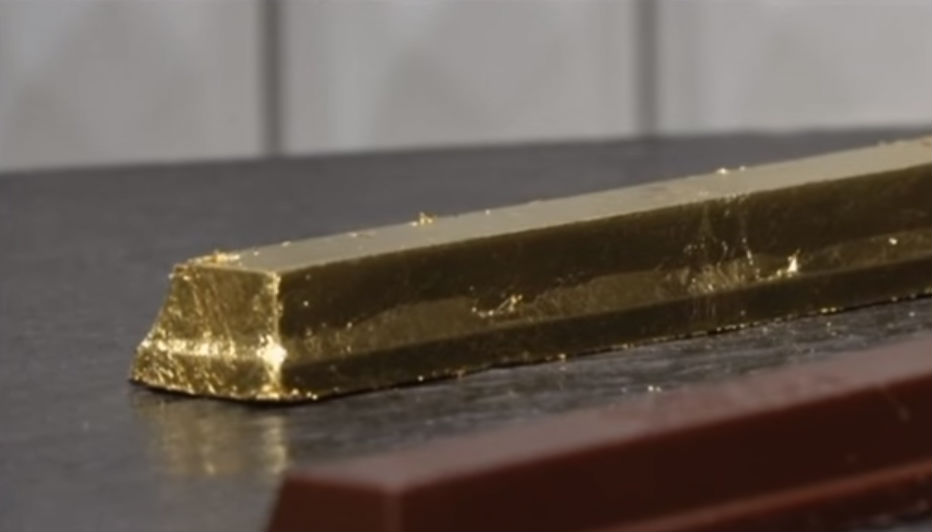Nyheter
Five billion ounces of gold
 It is estimated that in 2011 the cumulative amount of gold that has been mined throughout history surpassed five billion ounces. This is an astounding amount of gold. Interestingly, 90% of it, or 4.5 billion ounces of gold, is estimated to have been mined since 1900. Attached here is a chart that shows Cumulative World Gold Production and Its Distribution: How much has been mined, and where it is believed to exist.
It is estimated that in 2011 the cumulative amount of gold that has been mined throughout history surpassed five billion ounces. This is an astounding amount of gold. Interestingly, 90% of it, or 4.5 billion ounces of gold, is estimated to have been mined since 1900. Attached here is a chart that shows Cumulative World Gold Production and Its Distribution: How much has been mined, and where it is believed to exist.
Nearly all of this gold is estimated to be relatively available. Two billion ounces are held in gold bullion and coin form by investors and central banks. Another 2.3 billion ounces are in jewelry, religious objects, and decorative objects. Only about 530 million ounces, or slightly more than 10%, are estimated to have been lost. This chart and data are from the CPM Group Gold Yearbook 2012, released 27 March 2012, and available at CPM Group’s website.
On 17 May CPM Group will release its Silver Yearbook 2012. In that report we will show that cumulative world silver production is estimated to have surpassed 50 billion ounces in 2011, ten times as much as gold. In stark contrast to gold, about 46% of the silver mined throughout history is estimated to be lost or undetermined in its location. People will lose silver, or use in it an industrial or household application from which it does not get recovered (e.g. mirrors). People tend not to lose gold.
Notes: Official stocks include holdings of central banks, the International Monetary Fund, European Central Bank, and the Bank for International Settlements. Total disposition may not equal cumulative production due to rounding and other discrepancies in the historical data. The distribution of 154 million ounces of pre-1800 production is not able to be discerned. Additionally, the assumptions have been made that most of the gold recovered from scrap since 1977 has been from jewelry and decorative objects and the metal thus recovered largely was used in the manufacture of new jewelry.
Where does this data come from? It is a rich tradition. In the 1960s Harry Oppenheimer pulled together a team of economists and statisticians to develop estimates of how much gold had been mined through history and its rough disposition. The postwar Bretton Woods dollar-gold international currency regime was shaking to pieces and clearly was going to fail. He wanted to know if Anglo American Gold could do for gold what DeBeers did for diamonds: Serve as the buyer or seller of last resort, and thereby stabilize (if not control) the price of gold. The answer to that question was how much gold was out there in the world, and who held it. If there was a lot of gold in bullion form, readily available to the market, and it was widely dispersed among people and governments, then the gold market could not be managed as the diamond market was.
The team he created developed estimates of gold supply and demand. (They actually were employed by Charter Consolidated, one of the Oppenheimer family companies.) The reports they produced initially were for internal corporate use, but later were sold and distributed through the South African Chamber of Mines. In time Anglo American decided to stop financing this research program, and the team was disbanded. The task of annually updating the Charter Consolidated annual gold reports was scooped up by the rival mining house Consolidated Gold Fields, which did an exemplary job until it was disbanded itself after Hanson plc acquired the company in 1989. The research team was shared in parts by Consgold and J. Aron, which in the late 1960s also was establishing a commodities research department (the percursor to CPM Group).
Since the late 1960s the J. Aron Research Department and, after we left J. Aron/Goldman Sachs en masse in 1986, the CPM Group research team has diligently updated this data series each year.
[box]Denna analys är producerad av CPM Group och publiceras med tillstånd på Råvarumarknaden.se.[/box]
Disclaimer
Copyright CPM Group 2012. Not for reproduction or retransmission without written consent of CPM Group. Market Commentary is published by CPM Group and is distributed via e-mail. The views expressed within are solely those of CPM Group. Such information has not been verified, nor does CPM make any representation as to its accuracy or completeness.
Any statements non-factual in nature constitute only current opinions, which are subject to change. While every effort has been made to ensure that the accuracy of the material contained in the reports is correct, CPM Group cannot be held liable for errors or omissions. CPM Group is not soliciting any action based on it. Visit www.cpmgroup.com for more information.
Nyheter
USA ska införa 50 procent tull på koppar

USA:s president Donald Trump har precis meddelat att landet ska införa en tull på 50 procent på basmetallen koppar. Priset på råvarubörsen i USA stiger omgående med 10 procent.
USA har viss inhemsk produktion av koppar, men den inhemska efterfrågan överstiger produktionen. Därför måste landet importera koppar för att täcka behovet, särskilt för användning inom elnät, elektronik, byggindustri och fordonssektorn. De största exportörerna till USA är Chile, Kanada, Mexiko och Peru.
När tullar av denna typ införs uppstår prisskillnader i världen. Handlar man koppar på börsen är det därför viktigt att veta vilken börs man handlar på eller om man använder certifikat så är det viktigt att veta vilka underliggande värdepapper de följer.
Sedan är det som alltid med Trump, begreppet är som bekant TACO, Trump Always Chickens Out. Man ska alltså inte ta några definitiva stora beslut baserat på vad han säger. Saker och ting kan ändra sig från dag till dag.
Nyheter
Ryska staten siktar på att konfiskera en av landets största guldproducenter

En våg av panik sprider sig bland Moskvas elit sedan Vladimir Putins regim inlett en dramatisk offensiv för att beslagta tillgångarna hos Konstantin Strukov – en av Rysslands rikaste affärsmän och ägare till landets största guldgruvföretag, Yuzhuralzoloto. Åtgärden ses som ett tydligt tecken på hur långt Kreml är villigt att gå för att säkra ekonomiska resurser i takt med att kostnaderna för kriget i Ukraina stiger.
Strukovs förmögenhet, som uppskattas till över 3,5 miljarder dollar, byggdes upp under decennier i nära relation med maktens centrum i Ryssland. Men den 5 juli stoppades hans privatjet från att lyfta mot Turkiet. Enligt flera ryska medier deltog den federala säkerhetstjänsten FSB i ingripandet, och Strukovs pass beslagtogs. Händelsen ska vara kopplad till en omfattande rättsprocess där åklagare kräver att hela hans företagsimperium förverkas – med hänvisning till påstådd korruption och användning av skalbolag och familjemedlemmar för att dölja tillgångar.
Företaget själva förnekar att något inträffat och kallar rapporteringen för desinformation. De hävdar att Strukov befann sig i Moskva hela tiden. Trots det bekräftar rättsdokument att både han och hans familj förbjudits att lämna landet, och att myndigheterna snabbt verkställt beslutet.
Det som nu sker är en del av ett större mönster i ett Ryssland präglat av krigsekonomi: staten tar tillbaka kontrollen över strategiska sektorer som guld, olja och försvarsindustri – industrier som nu allt mer mobiliseras för att finansiera och stödja krigsinsatsen. Intressant nog handlar det inte om att Strukov ska ha varit illojal mot regimen – tvärtom har han varit en lojal allierad, med politiska uppdrag knutna till Putins parti. Men lojalitet räcker inte längre som skydd.
Medan tidigare utrensningar ofta riktade sig mot krigskritiker eller de som flydde landet, drivs dagens tillgångsövertaganden av något mer fundamentalt: ekonomisk nöd. De växande sanktionerna har nästan helt strypt inflödet av utländskt kapital. Statens oljeintäkter minskar och budgetunderskotten växer. Putins lösning är att vända sig inåt – till de oligarker han själv lyfte fram – för att fylla statskassan.
Det här är inte ett enskilt fall. På senare tid har flera framstående affärspersoner hamnat i plötsliga rättsliga tvister, omkommit under mystiska omständigheter eller sett sina bolag tas över av staten. Den oskrivna överenskommelsen som länge gällde i Putins Ryssland – rikedom i utbyte mot lojalitet – håller på att kollapsa.
Den 8 juli väntar en rättsförhandling som kan avgöra framtiden för Strukovs affärsimperium. Men budskapet till Rysslands näringslivselit är redan tydligt: ingen är för rik, för lojal eller för nära den politiska makten för att gå säker. I ett Ryssland där kriget kräver allt större uppoffringar riskerar oligarker att snabbt förvandlas till måltavlor.
Nyheter
Hur säkrar vi Sveriges tillgång till kritiska metaller och mineral i en ny geopolitisk verklighet?

När världsläget förändras ställs Europas beroende av metaller och mineral på sin spets. Geopolitiska spänningar, handelskonflikter och ett mer oförutsägbart USA gör att vi inte längre kan ta gamla allianser för givna. Samtidigt kontrolleras en stor del av de kritiska råvarorna vi är beroende av av andra makter – inte minst Kina. Vad händer med Sveriges industriella förmåga i ett läge där importen stryps? Hur påverkas försvarsindustrin av Kinas exportrestriktioner? Är EU:s nya råvarupolitik tillräcklig för att minska sårbarheten – eller krävs ytterligare statliga insatser och beredskapslagring? Svemin anordnade den 25 juni ett seminarium som bestod av bestod av deltagare från myndigheter, politik och industri. Man diskuterar Sveriges och EU:s strategiska vägval i en ny global verklighet – och vad som krävs för att säkra tillgången till metaller när vi behöver dem som mest.
-

 Nyheter4 veckor sedan
Nyheter4 veckor sedanStor uppsida i Lappland Guldprospekterings aktie enligt analys
-

 Nyheter4 veckor sedan
Nyheter4 veckor sedanSilverpriset släpar efter guldets utveckling, har mer uppsida
-

 Nyheter3 veckor sedan
Nyheter3 veckor sedanUppgången i oljepriset planade ut under helgen
-

 Nyheter2 veckor sedan
Nyheter2 veckor sedanMahvie Minerals växlar spår – satsar fullt ut på guld
-

 Nyheter3 veckor sedan
Nyheter3 veckor sedanLåga elpriser i sommar – men mellersta Sverige får en ökning
-

 Analys3 veckor sedan
Analys3 veckor sedanVery relaxed at USD 75/b. Risk barometer will likely fluctuate to higher levels with Brent into the 80ies or higher coming 2-3 weeks
-

 Nyheter2 veckor sedan
Nyheter2 veckor sedanOljan, guldet och marknadens oroande tystnad
-

 Nyheter2 veckor sedan
Nyheter2 veckor sedanJonas Lindvall är tillbaka med ett nytt oljebolag, Perthro, som ska börsnoteras

















